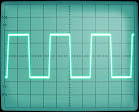(this post is dedicated to my friend lily, in honor of their new blog!)
the transients of a waveform is measured in three chronological parts: its attack phase, steady state, and decay phase. attack measures the amount of time a wave takes to get from zero to its maximum amplitude—steady state stays there— decay measures the amount of time a wave goes from its maximum to zero.
like this:
what else can be measured with these three components?
more recently i've been obsessed with the transients of a back-and-forth. an interaction between two. i'll see people and i'll be thinking 'ok, how am i going to greet them?' alternatively, i've spoken to people and during the interaction i'm thinking 'ok, how the hell am i going to kill this?'
i know i'm not the only person who's thought about interactions in this way because my mom is a grade-A decay-er. she'll be plotting an out to 99% of her work interactions the moment they begin. social against her will, she calls it. every now and then i can clock someone actively trying to kill a conversation with me. this has me wondering how obvious i am when i do it. one of these days i just want someone to keep it a buck and say 'well, that was that.'
a transients example (allow me to set this scene for you): you pass a buddy while you're both on the way to a compulsory event. the attack phase is very short, since you're both pleasantly surprised to run into each other. you exchange quick pleasantries in the steady state of your conversation-- where you headed? are you busy this week? the decay is short as well because you both understand that you are expected somewhere else. you say goodbye and you're on your merry way.
the transients of your interaction is similar to that of a note on a piano (when the sustain pedal is untouched)
another example: you think you recognize a celebrity at an event. you get the courage to start a conversation. this celebrity is used to fans, but has nowhere to escape to, so you both continue talking. you are too excited to notice that this celebrity is humoring you all the while trying to find an out in this interaction. after far too long, they excuse themselves. short attack, short steady state, long decay.
the transients of your interaction is similar to that of a bell
another: you and your roommate are cleaning the house. you both exchange an occasional 'excuse me' and 'i'll take care of this'. immediate attack, short steady state, immediate decay. repetition.
let's play a game: can you guess which instrument shares the transients of this interaction?
your lover has been shot in your kitchen. the attacker has fled. after hearing the gunshot from the bedroom, you race downstairs and call 911. they are bleeding out, and you must distract them so they maintain their consciousness. you remind them of your fondest memories together-- you know their chances of survival are slim, as you live at the top of a mountain. your lover suffers for hours, before passing away. the last thing they hear is the sound of your voice.
a) a kick drum
b) a gong
c) a horn
d) a violin
if you answered b) a gong, you're correct. a gong has the longest decay phase of any (non-manipulated) instrument
i guess transients exists across several mediums-- there are so many things with a beginning, middle, and end, after all. a movie, a record (stereolab released an album titled transient random noise-bursts with announcements. calling song lyrics 'announcements' is too clever), a game, a lifespan (the decay phase starts when your body literally begins decaying. ouch) reminds me of the time kurt vonnegut mapped out the shapes of different stories on a graph.
more on this as it develops, actually probably not, etc.





No comments:
Post a Comment